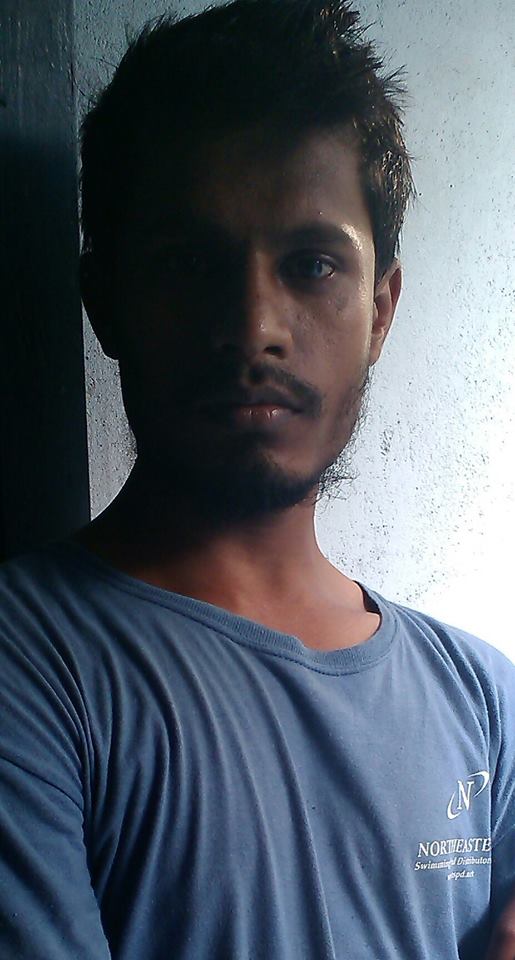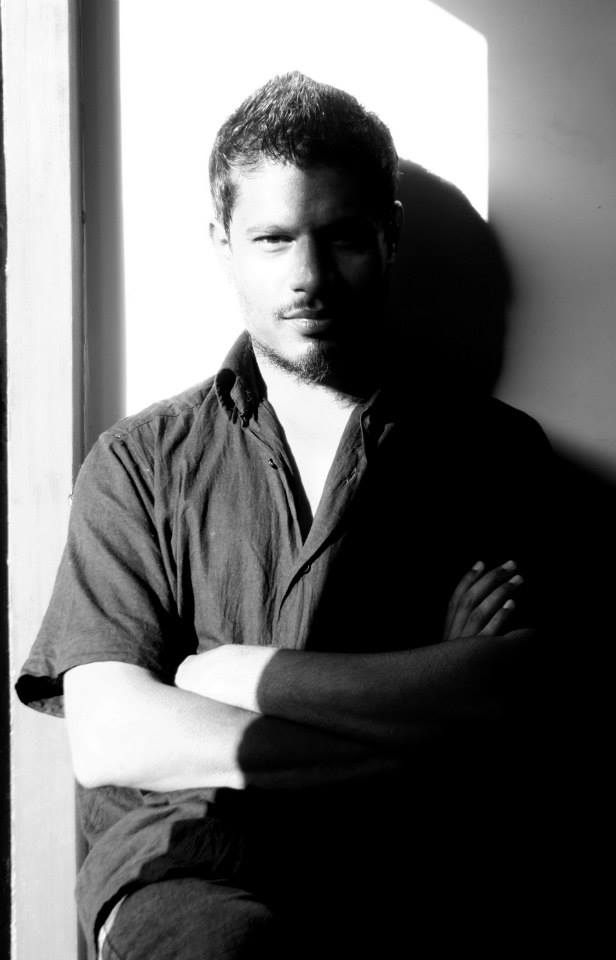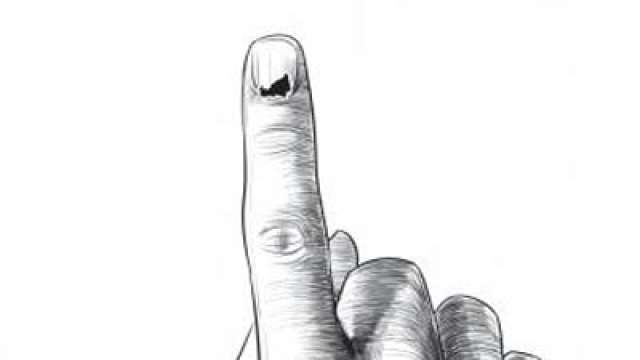Yogesh Maitreya
 On the evening of 5th of December, I, along with my friend who is a photographer, paid a visit to Ramabai Nagar in Ghatkopar East, Mumbai. At the entrance of the colony, a huge statue of Ambedkar stood. Open space in front of it had been cleaned with water, and preparations for decorating the statue with garlands were being made. Sound systems were set up. Preparations were being made to pay homage to their lifetime idol and emancipator, Dr. Ambedkar.
On the evening of 5th of December, I, along with my friend who is a photographer, paid a visit to Ramabai Nagar in Ghatkopar East, Mumbai. At the entrance of the colony, a huge statue of Ambedkar stood. Open space in front of it had been cleaned with water, and preparations for decorating the statue with garlands were being made. Sound systems were set up. Preparations were being made to pay homage to their lifetime idol and emancipator, Dr. Ambedkar.
I, having been born in a Dalit basti and raised there, did not find these activities in Ramabai Nagar unfamiliar. Inside Ramabai Nagar, the roads were narrow, the houses clung together, the bazaar was fully active with the high pitched cries of vegetable vendors, bargaining customers, shops being opened, bikers going crazy and blaring horns – this was the background music of what was in motion.
It looked so common a scene. But something has made this Dalit colony the memory which humanity can never forget. It was the symbolic message of how Dalits, who have been resisting the tradition of being excluded, could be repressed, sabotaged by the established casteist authorities in modern India.
Flex hoardings at Ramabai Nagar on the evening of 5th December 2013. Photograph by: Daisy Katta
11th July 1997: as the day started, it was discovered that the statue of Dr. Ambedkar had been vandalised, desecrated with a garland of shoes and sandals. Local police were informed, but that only contributed to the frustrations of the infuriated group as the police paid no serious heed. The police have failed to catch the perpetrators even until today.
By afternoon, on the same day, 10 Dalits were killed and 26 seriously injured. 11 Dalits were accused of rioting and were acquitted by court only thirteen years later.
Manohar Kadam, then PSI (Police Sub Inspector), who was indicted by the Gundewar Commission on the charge of firing on the protestors, when there was no need for firing as such, was bailed out later with the sentence suspended.
16 years ago, in this homicidal act, ten families lost someone close; those who were injured are now disappointed, disillusioned about the governance in the state. What is making them go on with their lives then? What is it that makes them stand up against the discriminatory, casteist powers? What is it that inspires them to pursue the life of equality, liberty and fraternity, to seek justice and a life of dignity? I met one such life on that evening. His name was Milind Pagare.
Milind Pagare, a victim of Ramabai Nagar mass carnage on 11th July 1997. Photograph by: Daisy Katta
In 1997, when Milind was in his late teens, Maharashtra was under the rule of the local chauvinist party Shiv Sena, believed by some to be linked with the 1984 Bhiwandi riots and the 1992-93 Bombay riots. It had also tried to counter as well as repress Dalit activism in Maharashtra, in concert with the BJP. Milind now is a man of 36 with a fully grown, thick beard. Sixteen years have passed since he was victimised in the random firing ordered by Inspector M. Kadam. Memories of 11th July are still vivid in his mind.
Milind, showing his leg which has got severely injured on 11th July 1997 in teargas firing. Photograph by: Daisy Katta
His house was in the middle of Ramabai Nagar. Back on 11th July 1997, the police had entered his immediate neighbourhood and fired randomly. Milind was wounded in teargas firing which left him with heavy injuries on both his legs. The marks were heavy, when he exposed them to us. ‘When I got shot with teargas shells, blood was flowing like from sprinklers’ he said, narrating the happenings of 11th July.
Mocking the law, 11 Dalit protestors were booked under rioting. It took 13 years for the judicial system to identify them as innocents. Milind too was taken into custody, hit on injured legs. And when he asked for water, the police asked him ‘to drink urine’ he told us, his eyes wide open as if trying to visualize the incident. Moreover, no necessary medical treatment was provided. Factionalised Dalit leaders were almost ineffective in defending the victims and presenting their case. Milind, along with other victims, was left on his own.
Much has changed since then. ‘Ramabai Nagar is more a mixed community now’, a dynamic, young Dalit activist Kishor Kardak told me during the conversation.
Everyday life at Ramabai Nagar. Photograph by: Daisy Katta
The Shiv Sena, which once thoughtlessly criticised Ambedkar for his rational, logical contempt for Hindu scriptures, can now be seen using Ambedkar’s photo on their banners, frequently, in the locality. Other parties also have their ‘banner’ presence in Ramabai Nagar. On the other hand, Dalit politics have been factionalised and people face the dilemma of identifying a capable leader after Ambedkar.
On another level, cases of atrocities against Dalits go on unabated, especially in Maharashtra which once had been the frontrunner in Dalit politics. But amidst all this chaos, on the evening of 5th December, I have seen people devotedly preparing to pay homage to their leader and emancipator, Dr. Ambedkar, on his 57th death anniversary.
Kishor Kardak, Local Dalit activist in Ramabai Nagar. Photograph by: Daisy Katta
By nightfall, we moved to ‘Chaityabhoomi’ in Dadar, where Ambedkar had been cremated in 1956. It was my first visit to the place. It was so very alive, lit with glimmering lights. We roamed around, browsed books at stalls, tried to capture the flood of peaceful people through the lenses of the camera. Their sense of solidarity was hard to measure.
We walked and met people, who came from as far away as Parbhani, another atrocity prone area in Maharashtra. ‘We come here every year to pay homage to Babasaheb’ one of the groups of young boys told me. What I felt in their eyes was beyond reason and logic.
The crowd at Chaityabhoomi on the evening of 5th. Photograph by: Daisy Katta
In the night, while returning in the local train, I was looking reflectively at the dimly lit windows of the houses passing outside. This city of Mumbai which had nourished the Dalit movement, gave unique literary expression to it, had also witnessed the growing political eclipse over its creative energies in resisting the oppression of the casteist forces, over the tumultuous years.
But there is always a hope in resisting oppression and to identify it, I just needed to look back a little at the same evening. Milind, much after that fateful July 11th, had been offered a government job as compensation. But he refused it. Why? ‘How could I take the job from those who are responsible for the death of my ten brothers, and when the perpetrators are still free? I refused their job’ Milind said in his firm voice. That indicates a realization, vindicating Ambedkar, that even today, their battle is not for power or wealth but for dignity and human personality.
On the evening of 5th December 2013, a group of boys who had come to Chaityabhoomi, Dadar, to pay homage to Babasaheb. Photograph by: Daisy Katta
~~~
Yogesh says:
My name is Yogesh Maitreya. I am from Nagpur. I am doing my M.A in Criminology and Justice (2013-15) from TISS (Tata Institute of Social Sciences, Mumbai).
Photography by: Daisy Katta.










